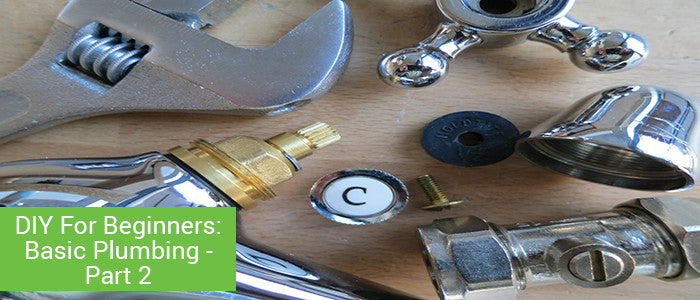How to fix leaking taps, smelly sinks and limescale removal
Last month, we looked at some basic plumbing skills, learning about water systems, how to locate your stopcock, and how to shut the water off to your home in emergencies, or when you need to do plumbing or repair work.
This month, in part two of our guide, we take a look at some common DIY plumbing jobs, including fixing a dripping tap, unblocking drains, and removing lime-scale.
Fixing dripping taps

Dripping taps can be irritating, and whilst most of the time, it’s caused by not turning the tap off properly, it can also be because the rubber seal inside the tap is wasting away or cracked. Thankfully, it’s a fairly easy fix.
First you need to identify where the leak is coming from. If water is dripping from the spout, then it’s likely to be caused by a perished or broken washer, and if it is leaking from the top of the tap, then it’s probably the ‘O’ ring that has gone.
Either way, the fix is the same – replace the perished part with a new one.
Traditional taps
Traditional taps are fairly easy to fix:
-
Turn off the water to the taps using the isolation valve (see part one of this blog if you’re unsure how).
-
Plug the sink – this will help you to avoid dropping screws or any other small components down the sink during the job!
-
Take the lid off the tap (usually, this will be the bit marked ‘Hot’ or ‘Cold’) – this will expose a screw.
-
Unscrew the screw to expose the cartridge inside – this can be tricky, so use a spanner and some elbow grease!
-
Remove this cartridge, and take it down to your local plumbers merchant’s/DIY shop, and ask them for the right washer/O ring.
-
Take the wasted washer or O ring off, and slip the new one on.
-
Put the tap back together, and tighten the screw.
Mixer taps
Mixer taps tend to be a bit trickier, and sometimes, you’ll need to replace the whole unit. However, before you do that, try the following:
-
Look for a red/blue hot/cold indicator, and try to prise it off – this should give you access to the tap
-
Use an allen/hex key to unscrew the tap
-
Take off the head of the tap to expose the cartridge
-
Extract the cartridge (you may need to remove some additional screws at the bottom)
-
Take it to the plumbers merchant to find the right replacements, then follow steps 6 / 7 as above.
Smelly Sinks

Sometimes, kitchen and bathroom sinks can give off a horrible sewage smell – but rather than calling out a plumber, there is an easy fix that will work in the majority of cases.
Generally, these smells are caused when the ‘trap’ – either a U-bend or a bottle trap runs dry. These traps need to have a certain amount of water in them, which prevents smells from the drains or sewers from coming back up the pipes and into your home.
To fix this, simply run your tap, which will fill up the trap. If this doesn’t work, you may have a problem with blocked drains…
Unblocking drains
Kitchen and bathroom drains are fairly prone to blockages, with hair, fats, dirt and soap scum all building up until the water can no longer flow.
Whilst there are a lot of strong chemicals designed to unblock drains, and these work well, there are more environmentally friendly solutions you can take.
The first, and most effective, is to invest in a magic finger/snake – which is a long, flexible metal rod that you can shove down your drains to remove any blockages. Inexpensive and very effective, they are a great investment, and can be found at any reputable DIY/building/plumbing shop.
If these fail to remove the blockages, you can also make some homemade, environmentally friendly un-blockers from household ingredients. One recipe is to put two tablespoons of bicarbonate of soda down your drain, followed by a good amount of cheap vinegar, before putting the plug in. Leave the sink for half an hour to let the chemicals do their work, then pour down a kettle of boiling water.
Managing lime scale

Lime scale is a really common problem that has the potential to both ruin the performance and aesthetics of your taps and showers especially in hard water areas, but there are plenty of things you can do to remove it.
If your shower head or taps are clogged, try soaking them in vinegar overnight, or if you can’t remove them, wrap them in cloths soaked in vinegar and water, then wrap the whole unit in cling-film.
How Eurofit can help
At Eurofit, we stock a huge range of top quality DIY tools perfect for a wide range of common plumbing jobs, all at unbeatable trade prices.
